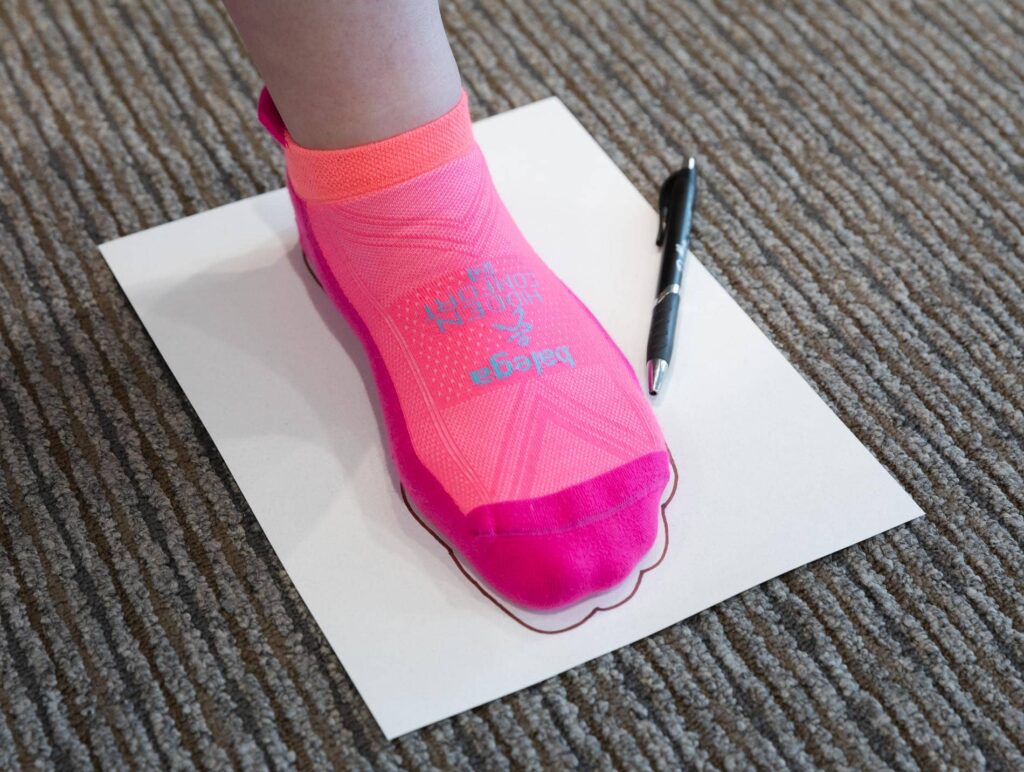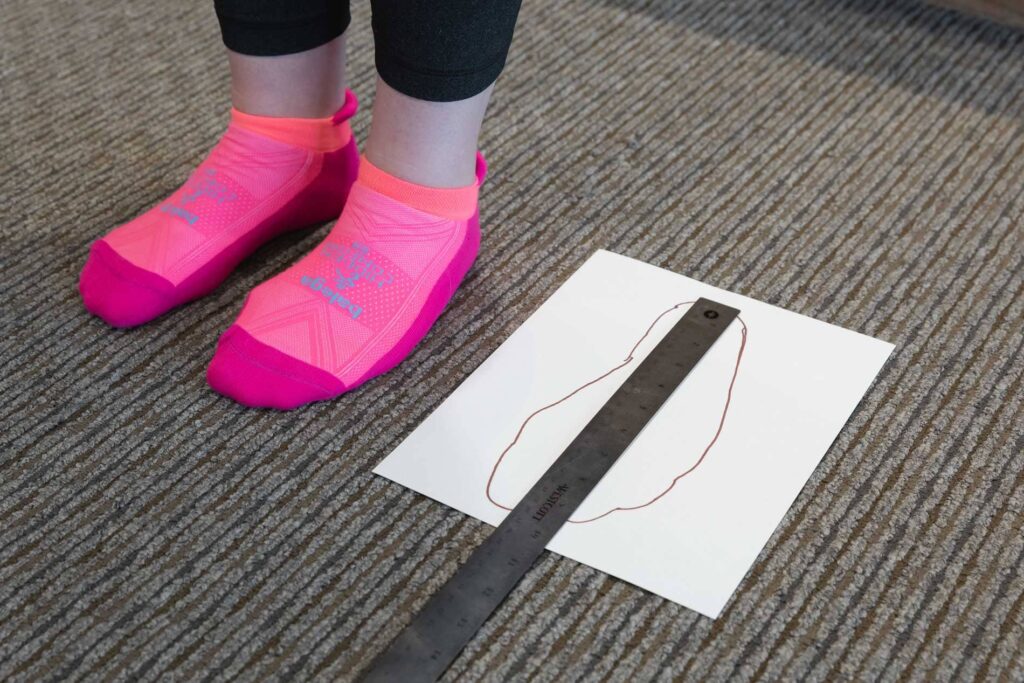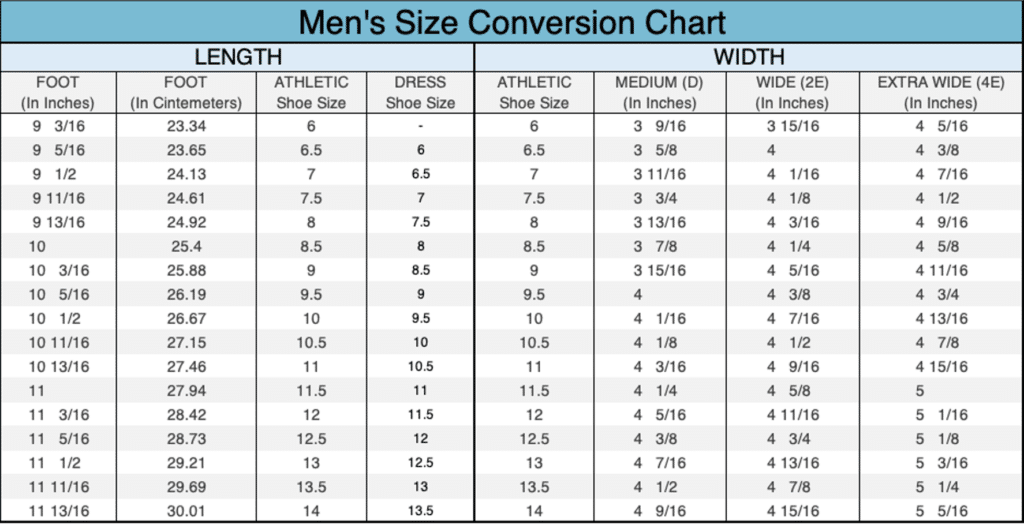At The Running Well Store, we specialize in ensuring you are in the proper fitting pair of shoes, however not everyone can come to see us in person. Below is a simple way for you to find your size at home.
A properly fitting pair of running shoes should feel snug in the heel with some wiggle room in the toes. A typical rule of thumb for a proper fit is to go a half size up in your athletic shoes compared to your dress or casual shoes.
Measuring both feet is important as most individuals have one foot that is larger than the other and we will fit for the larger foot.
If you have not had your feet measured since your parents dragged you in for school shoes, it is time to get fitted! The length and width of your foot changes throughout your life so we recommend that you get fitted every year.

Step 1.
Find a flat, hard surface

Step 2.
Wearing the socks you will be using with the shoe, stand with your weight on your foot and trace the outline of your foot.

Step 3.
Repeat step 2, but with your other foot.

Step 4.
Measure the length of both outlines and the width of both outlines.

Step 5.
Using the measurements from your larger foot, see the conversion table for the length and width of the shoe.


Frequently Asked Questions
Why do we wear a larger size in athletic shoes?
We recommend going up at least a half a shoe size from your dress shoes because your feet swell when you run, walk or are on your feet all day. It is important to have plenty of room in the toebox to allow for proper blood flow and swelling. If your shoes are too snug then you can develop blisters, black toenails or numb feet.
How often should I have my foot measured?
It is important to have your foot properly measured every year. Over time our bodies change meaning that the size we wore in high school is often not the same size we wear in our 30s. Your arch may lower over time, resulting in a longer foot. Pregnancy can often change the size of your foot as well as weight changes and activity level.
Do women's feet change size during and after pregnancy?
Weight gain during pregnancy can cause the arch to lower and lead to a longer foot.
Is it true that I can add a half size to my dress shoe to find my athletic shoe size?
In general, running and walking shoes are a half size larger than your dress shoes.
One foot is really larger than the other?
Most individuals have one foot that is larger than the other, often it is a half size and sometimes it can be a full size difference. We recommend that you size for the larger foot. A shoe that is too small is more likely to cause issues than one that is too big.
If I am running for speed do I still wear a shoe with some wiggle room?
A tighter fit means that you will stay better connect to the shoes when picking up the pace, so it may be worth it to give up some of the room in the toe box for a more secure fit. Many racing and performance shoes (such as cross country and track spikes) have a tighter fit overall than everyday training shoes. Remember that a shoe that is tight can lead to black toenails or you could completely lose toenails due to too snug of a shoe.





